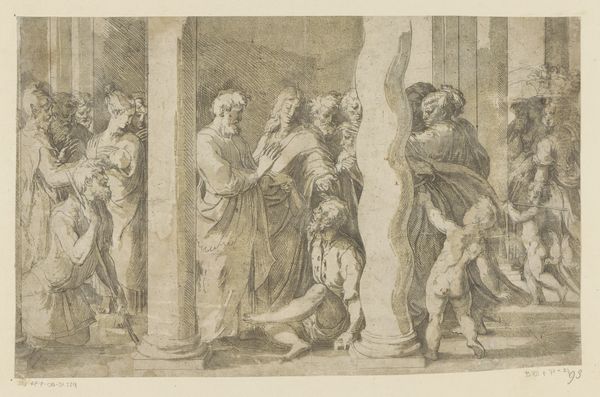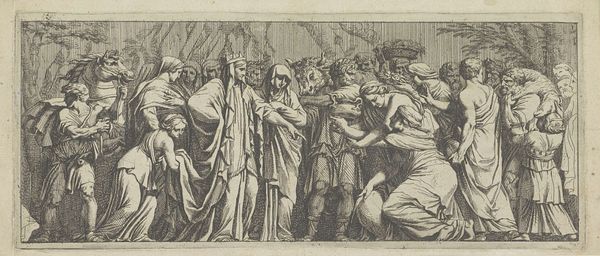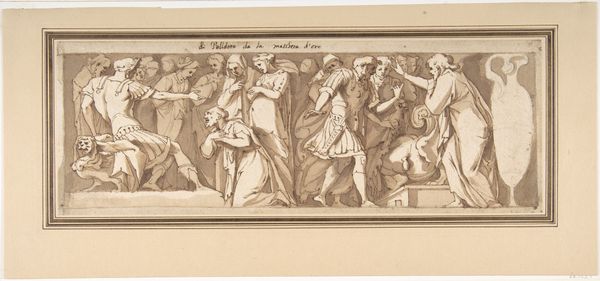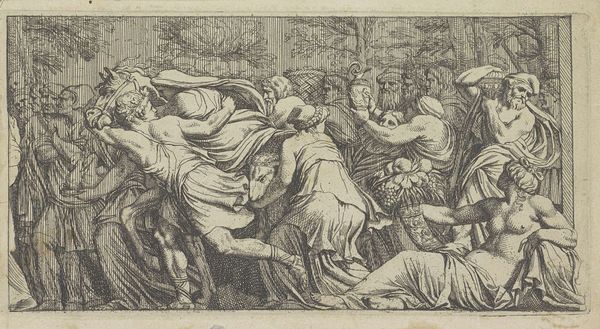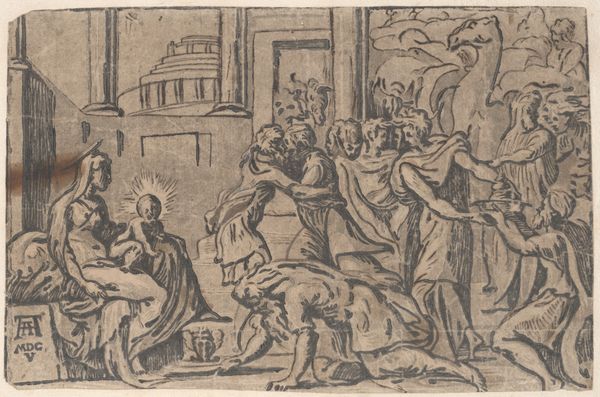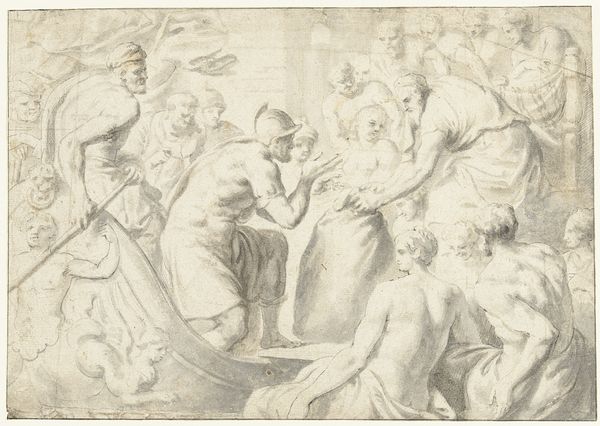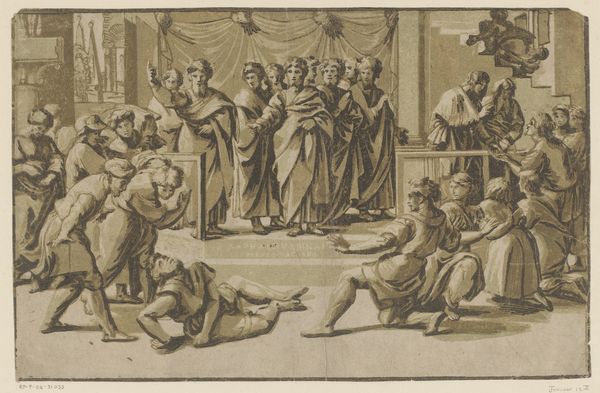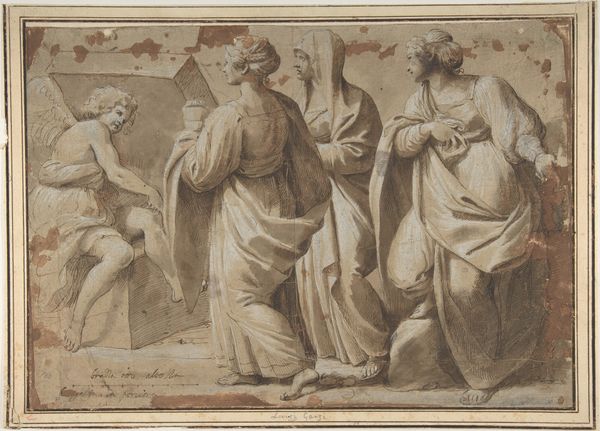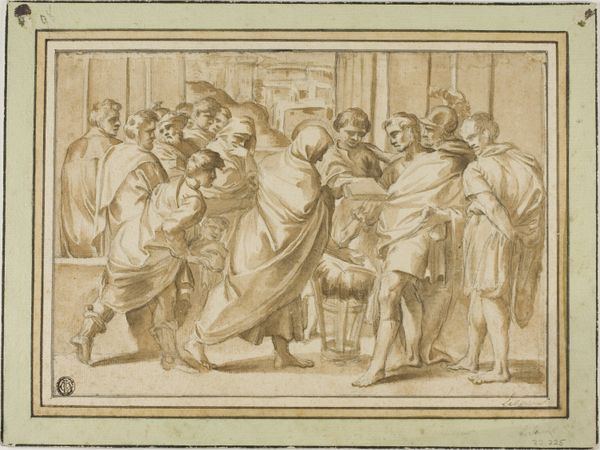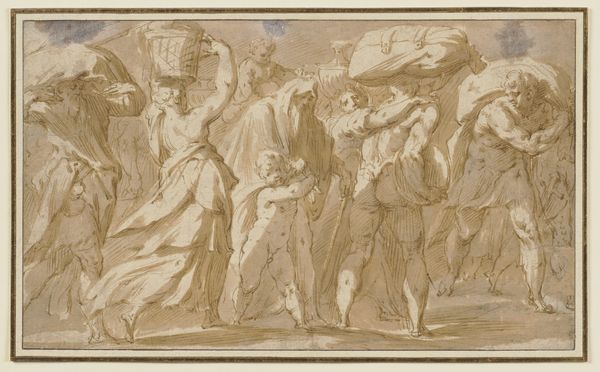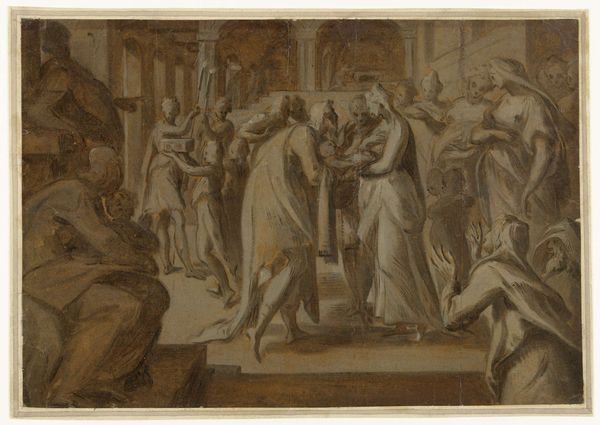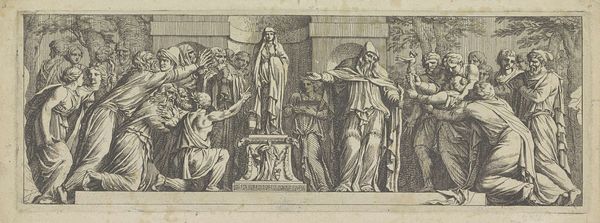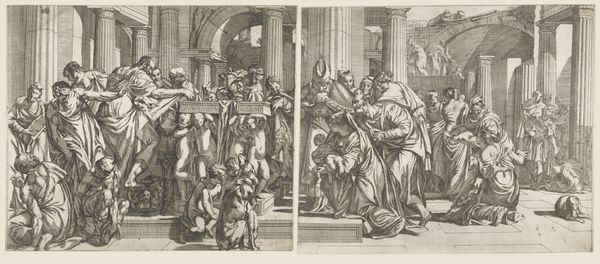
Statue of Niobe and her Worshippers, with Apollo and Diana and other Figures, after Polidoro da Caravaggio 1543 - 1547
0:00
0:00
drawing, print
#
drawing
#
toned paper
#
light pencil work
# print
#
pencil sketch
#
personal sketchbook
#
coloured pencil
#
pen-ink sketch
#
men
#
sketchbook drawing
#
watercolour illustration
#
sketchbook art
#
watercolor
Dimensions: Sheet: 9 in. × 19 9/16 in. (22.8 × 49.7 cm) Mount: 9 in. × 20 1/16 in. (22.8 × 51 cm)
Copyright: Public Domain
This anonymous engraving captures a drawing by Polidoro da Caravaggio, likely made in Italy sometime in the 1500s. The image depicts a scene from classical mythology – the story of Niobe, whose pride led to the slaughter of her children by Apollo and Diana. The visual language is rooted in the classical tradition, seen in the idealized figures and the frieze-like composition. Consider the cultural context: Italy during the Renaissance was fascinated by classical antiquity, and artists like Polidoro drew inspiration from ancient art and stories, and his works decorated the city of Rome. Note the institutional aspect: engravings like this played a crucial role in disseminating artistic ideas. They allowed artists’ inventions to reach a wider audience, shaping artistic tastes and influencing other works of art. Understanding the artwork requires us to delve into the cultural values and artistic practices of sixteenth-century Italy. Researching period literature, art theory, and the biographies of artists will reveal a deeper understanding of its meaning. Art history is not just about the artwork itself, but also the society that produced it and the institutions that shaped its creation and reception.
Comments
No comments
Be the first to comment and join the conversation on the ultimate creative platform.
